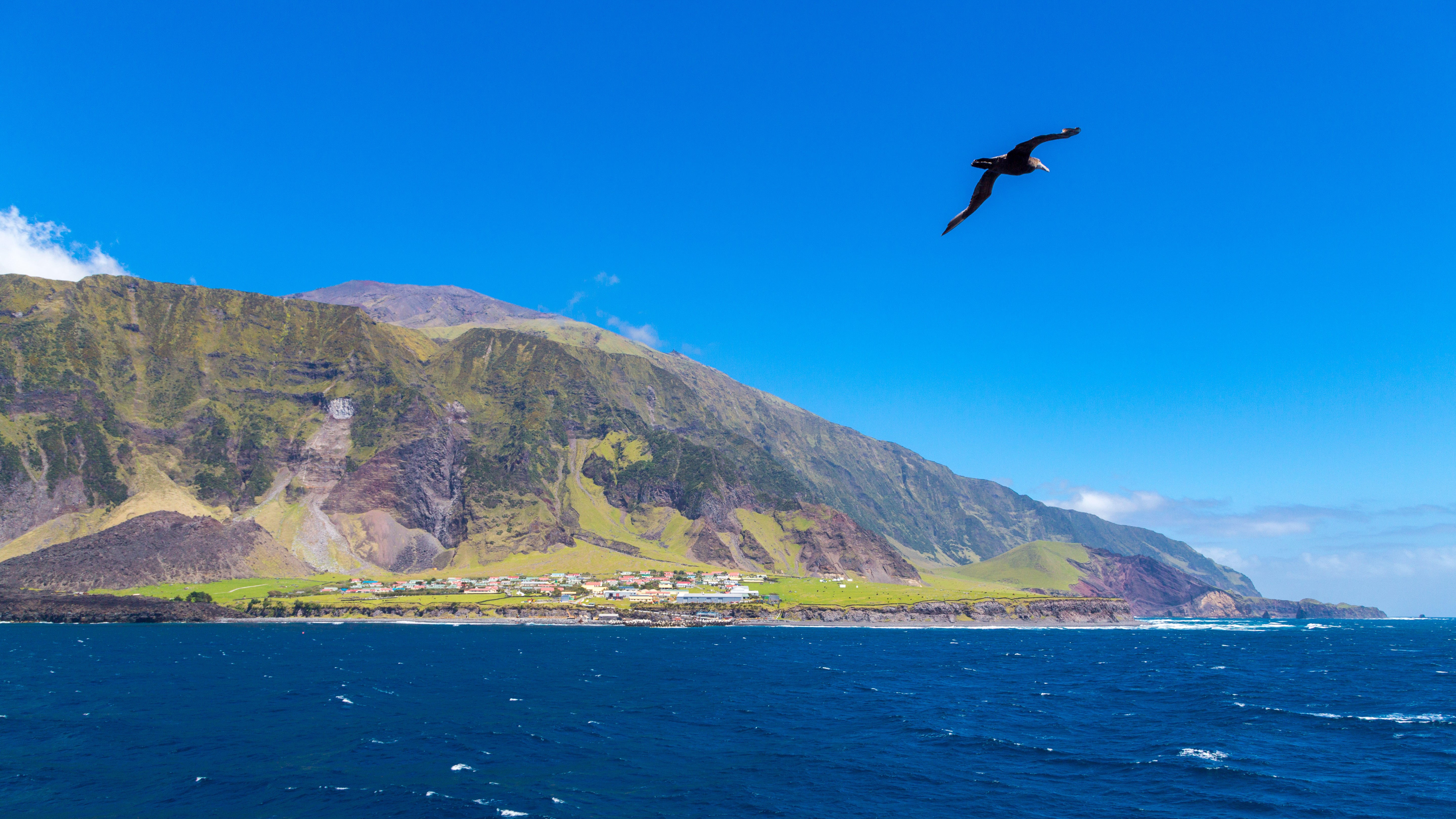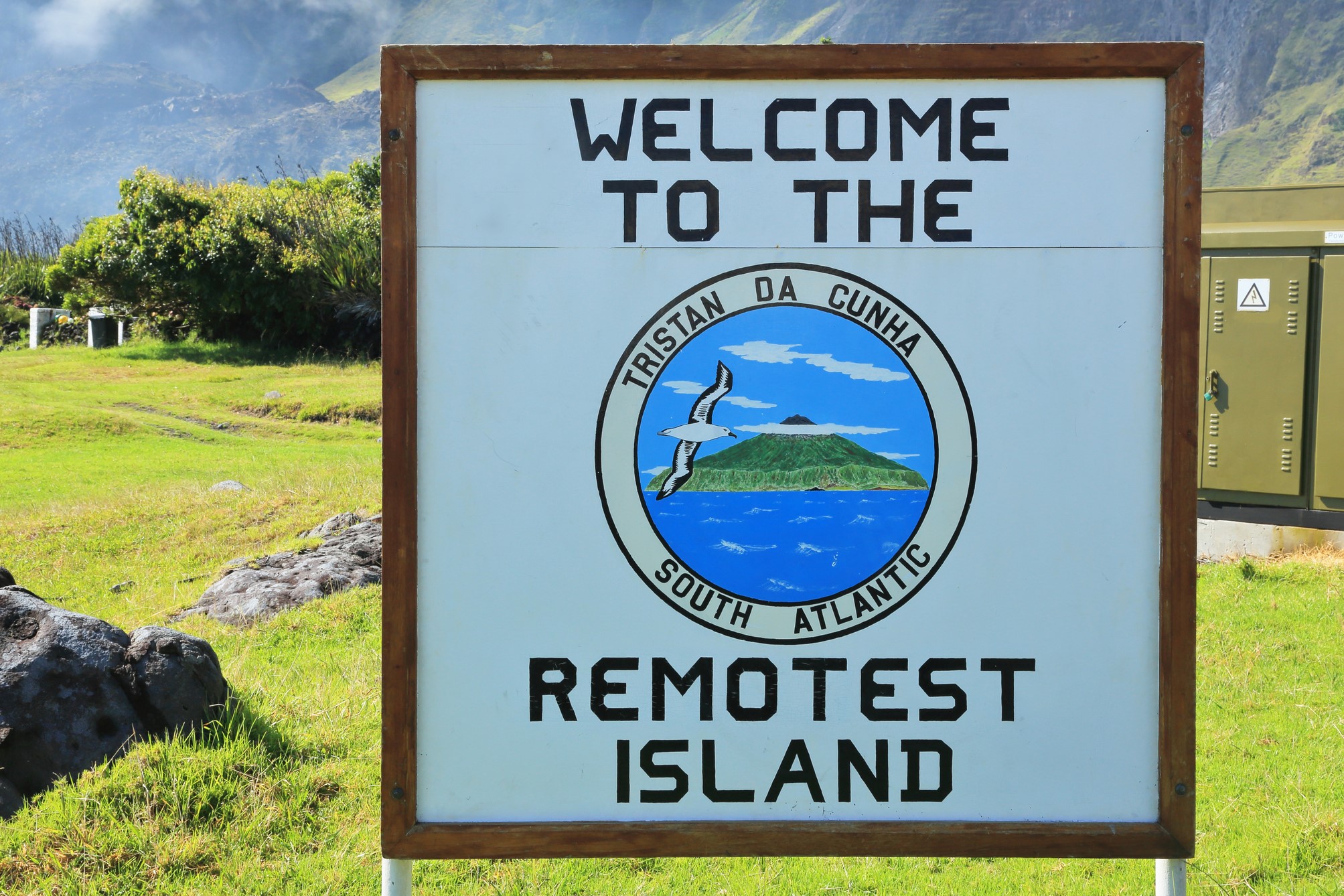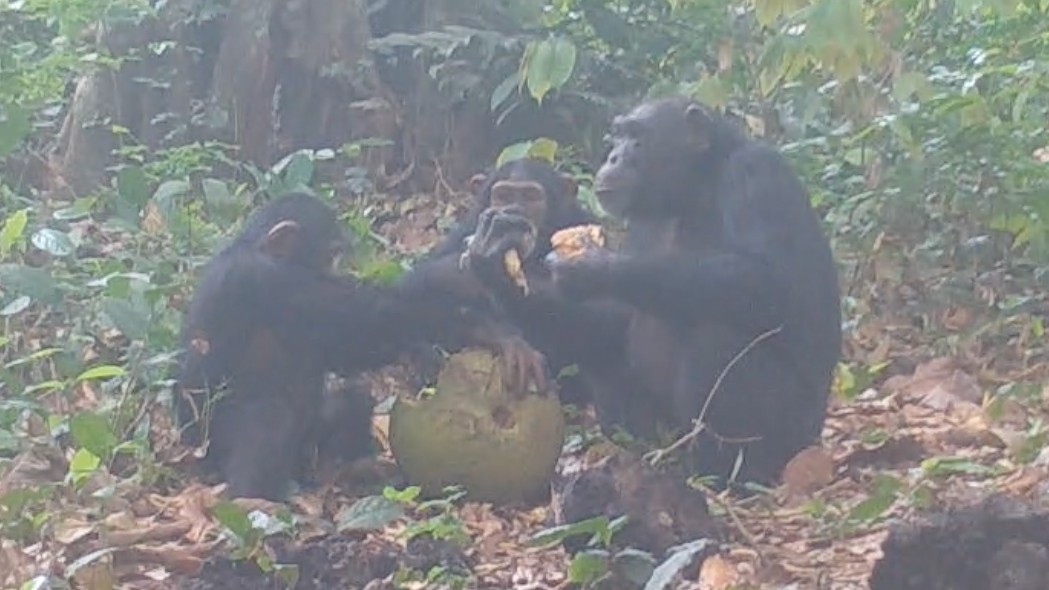Tristan da Cunha: The most remote inhabited island on Earth, forged from a supercontinent breakup
Tristan da Cunha is a group of islands in the South Atlantic that formed from the breakup of the supercontinent Gondwana. Today, it's home to a tiny and extremely isolated farming community.

Name: Tristan da Cunha
Location: South Atlantic Ocean
Coordinates: -37.10837644054316, -12.287346670465638
Why it's incredible: The group of islands is the most remote inhabited location on Earth.
Tristan da Cunha is a group of islands in the South Atlantic Ocean that is home to the world's most isolated human settlement. Around 250 people holding British Overseas Territories citizenship live on the archipelago's only inhabited island, also called Tristan da Cunha, in a community known as Edinburgh of the Seven Seas.
Tristan da Cunha, or Tristan for short, comprises six volcanic islands that sit 1,500 miles (2,400 kilometers) southwest of St. Helena island, another British outpost in the Atlantic. Together with Ascension Island, Tristan and St. Helena form a British Overseas Territory that spans more than 2,000 miles (3,250 km) of the Atlantic Ocean, from a point west off the coast of Gabon in Africa to a point farther south than the tip of South Africa.
The main island stretches 7.5 miles (12 km) across and its cone-shaped volcano, called Queen Mary's Peak, rises 6,765 feet (2,062 meters) above sea level. The volcano's central crater is filled with a heart-shaped lake that freezes over in the winter and thaws in the summer, providing a cold bath for hikers that clamber up to the peak. The island is also a wildlife-watcher's paradise, with seals, albatrosses and northern rockhopper penguins (Eudyptes moseleyi) breeding on its shores.
Tristan is accessible only by a six-day boat journey from South Africa, and most of its inhabitants are farmers, according to the BBC.
Evidence of past geologic activity deep in Earth's mantle

Tristan's six islands are evidence of past geologic activity deep in Earth's mantle, each formed from peaks in the oceanic crust. They are located about 250 miles (400 km) east of the mid-Atlantic ridge, where the North and South American plates meet those of Eurasia and Africa. Over time, these plates have slowly moved apart, allowing molten rocks to bubble up into the gaps between them. Tristan's islands are not connected to the ridge, but they similarly formed as a result of magma gushing from deep within Earth's layers.
The archipelago was forged eons ago from what scientists call a hotspot — a large plume of hot material that rises from deep within the mantle, Earth's middle layer, and forms volcanoes in the crust above it. The hotspot in question, known as the Walvis Ridge Hotspot, formed between South America and Africa roughly 132 million years ago, when these continents were breaking up after millions of years spent locked together in the ancient supercontinent Gondwana.
Sign up for the Live Science daily newsletter now
Get the world’s most fascinating discoveries delivered straight to your inbox.
As the continents tore apart and Earth's crust began grinding westward over the Walvis Ridge Hotspot, volcanoes developed one by one in a horizontal line beneath the opening Atlantic Ocean. These volcanoes grew to become islands and eventually went extinct as they drifted farther away from their source of magma (the hotspot).
The main island of Tristan da Cunha is the second-farthest east of the archipelago, meaning it went extinct shortly after four of the islands — Inaccessible, Nightingale, Middle and Stoltenhoff islands — and shortly before the farthest-east island of Gough.
Discover more incredible places, where we highlight the fantastic history and science behind some of the most dramatic landscapes on Earth.

Sascha is a U.K.-based staff writer at Live Science. She holds a bachelor’s degree in biology from the University of Southampton in England and a master’s degree in science communication from Imperial College London. Her work has appeared in The Guardian and the health website Zoe. Besides writing, she enjoys playing tennis, bread-making and browsing second-hand shops for hidden gems.









